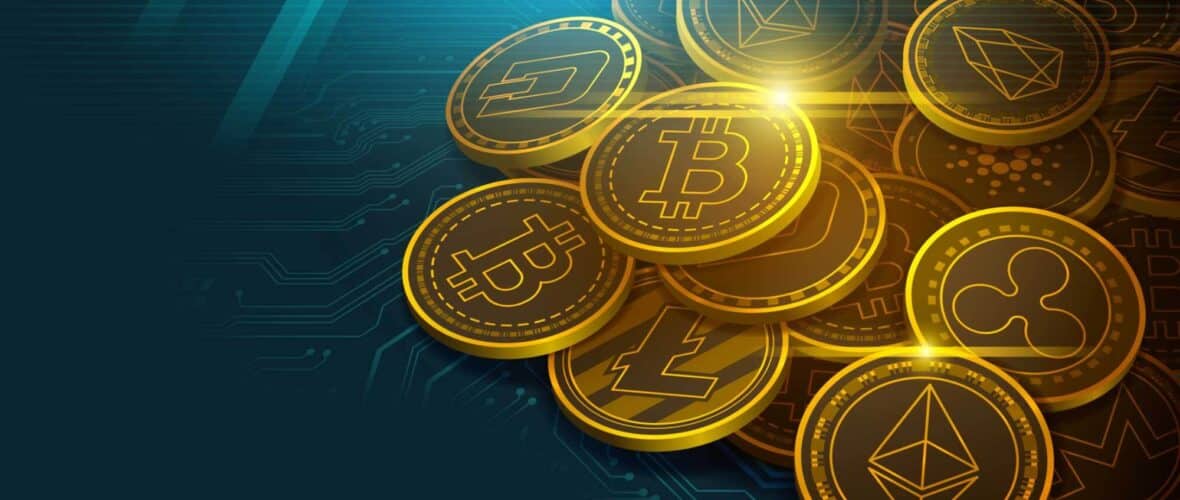Cryptocurrency, a groundbreaking financial innovation, is not limited to Bitcoin alone. Altcoins, or alternative cryptocurrencies, have emerged as a diverse and dynamic array of digital assets. Unlike Bitcoin, which serves primarily as a digital currency, altcoins offer unique functionalities and use cases. In this exploration, we will unravel the evolution, significance, and comparative analysis of altcoins in the vast cryptocurrency ecosystem. Do some research before you get into the complex ecosystem of crypto. Start your trading journey by using a reputable trading platform such as Trader AI.
The Birth of Altcoins
The advent of altcoins can be traced back to the need for diversification within the cryptocurrency landscape. Bitcoin’s dominance highlighted the potential for alternative digital assets with different features and objectives. The emergence of Namecoin in 2011 marked the beginning of altcoins, aiming to expand the scope of blockchain technology beyond a mere digital currency. Pioneering altcoins sought to address limitations perceived in Bitcoin, pushing the boundaries of what blockchain could achieve.
Altcoins vs. Bitcoin: A Comparative Analysis
Technological Differences
Altcoins often distinguish themselves through unique technological features. While Bitcoin uses a proof-of-work (PoW) consensus mechanism, many altcoins explore alternatives like proof-of-stake (PoS) and delegated proof-of-stake (DPoS). Ethereum, a prominent altcoin, introduced smart contracts, enabling decentralized applications (DApps) on its platform.
Market Dynamics and Volatility
Altcoins, being generally less mature and possessing smaller market caps than Bitcoin, tend to exhibit higher volatility. Investors can benefit from these fluctuations but must also navigate increased risk. Understanding the market dynamics of both Bitcoin and altcoins is crucial for a comprehensive investment strategy.
Use Cases and Applications
Beyond being a medium of exchange, altcoins often serve specific purposes. Ripple (XRP), for instance, focuses on transforming cross-border payments, offering faster and cheaper transactions. Litecoin positions itself as the “silver to Bitcoin’s gold,” emphasizing quick and low-cost transactions.

Noteworthy Altcoins
Ethereum: The Smart Contract Pioneer
Ethereum, a trailblazer in the altcoin galaxy, introduced the concept of smart contracts. These self-executing contracts automate and enforce the terms of agreements, unlocking a myriad of decentralized applications. Ethereum’s impact extends beyond being a cryptocurrency, shaping the landscape of decentralized finance (DeFi) and non-fungible tokens (NFTs).
Ripple (XRP): Transforming Cross-Border Payments
Ripple aims to revolutionize traditional banking systems by facilitating faster and more cost-effective cross-border transactions. Its use case addresses a real-world problem, positioning XRP as a bridge between different fiat currencies.
Litecoin: The Silver to Bitcoin’s Gold
Litecoin, created by Charlie Lee, was designed to complement Bitcoin’s role as a digital gold. With faster block generation times and a different hashing algorithm, Litecoin provides a scalable and efficient alternative for daily transactions.
Cardano: A Third-Generation Blockchain
Cardano distinguishes itself by adopting a research-driven approach to development. With a focus on scalability, sustainability, and interoperability, Cardano aims to create a more inclusive and secure global financial system.
Polkadot: Interoperability in the Altcoin Ecosystem
Polkadot addresses the challenge of interoperability between different blockchains. Its unique relay chain architecture facilitates communication and data transfer between diverse blockchains, fostering a more connected and collaborative crypto ecosystem.
Altcoin Mining and Consensus Mechanisms
Proof of Work vs. Proof of Stake
Altcoins often explore different consensus mechanisms to validate transactions and secure the network. While Bitcoin relies on PoW, which involves miners solving complex mathematical puzzles, many altcoins are transitioning to PoS, where validators are chosen based on the amount of cryptocurrency they hold and are willing to “stake” as collateral.
Energy Efficiency Concerns
The environmental impact of cryptocurrency mining, especially PoW-based systems like Bitcoin, has raised concerns. Altcoins utilizing PoS aim to address these concerns by requiring less energy-intensive validation processes, contributing to a more sustainable blockchain ecosystem.
Emerging Consensus Models
Innovation in consensus mechanisms continues, with emerging models like proof-of-burn, proof-of-space, and proof-of-history. These alternatives strive to enhance security, scalability, and energy efficiency within the altcoin space.
Altcoin Adoption and Challenges
Mainstream Acceptance and Integration
Altcoins face the challenge of gaining acceptance in mainstream financial systems. While Bitcoin has made strides in this regard, altcoins encounter resistance and skepticism. Collaborations with traditional institutions and regulatory clarity are key factors in fostering widespread adoption.
Regulatory Hurdles and Legal Frameworks
Altcoins operate within a regulatory landscape that is constantly evolving. Clarity on legal frameworks is crucial for the legitimacy and integration of altcoins into traditional financial systems. Regulatory challenges vary globally, requiring a nuanced approach to compliance.
Security Concerns and Solutions
As the Bitcoin ecosystem expands, security becomes a paramount concern. High-profile hacks and vulnerabilities underscore the need for robust security measures. Ongoing developments in encryption, multi-signature wallets, and decentralized exchanges contribute to enhancing the security posture of altcoins.
The Future of Altcoins
Emerging Trends and Innovations
The altcoin space continues to evolve, with emerging trends like decentralized finance (DeFi), non-fungible tokens (NFTs), and blockchain interoperability gaining momentum. Understanding these trends is essential for investors and enthusiasts alike.
Integrating Altcoins into the Broader Financial Landscape
As altcoins mature, their integration into the broader financial landscape becomes more plausible. Collaborations with traditional financial institutions increased regulatory clarity, and user-friendly interfaces are crucial steps toward mainstream adoption.
Conclusion
In conclusion, the exploration of the altcoin galaxy reveals a dynamic ecosystem extending beyond Bitcoin’s influence. Altcoins, marked by unique features and use cases, play a pivotal role in advancing blockchain technology and shaping the broader financial landscape. Essential to this understanding is a grasp of the intricacies surrounding individual altcoins, their distinctive consensus mechanisms, and the inherent challenges they confront within the intricate realm of cryptocurrencies. As the coexistence of altcoins and Bitcoin underscores the importance of diversification, staying well-informed about user-friendly solutions is crucial.
















